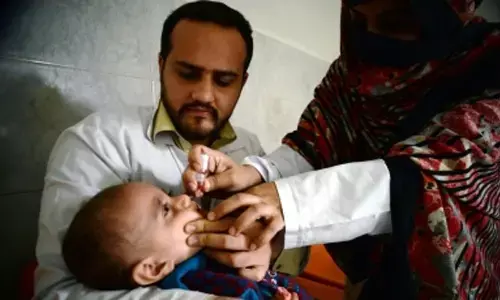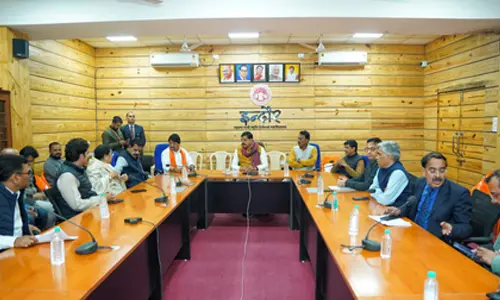What is Nagoya Protocol?

The Nagoya Protocol on access to genetic resources and the fair and equitable sharing of benefits arising from their utilisation (ABS) to the convention on biological diversity is a supplementary agreement to the Convention on Biological Diversity (CBD).
.jpg) The Nagoya Protocol on access to genetic resources and the fair and equitable sharing of benefits arising from their utilisation (ABS) to the convention on biological diversity is a supplementary agreement to the Convention on Biological Diversity (CBD). It provides a transparent legal framework for the effective implementation of one of the three objectives of the CBD: the fair and equitable sharing of benefits arising out of the utilisation of genetic resources.
The Nagoya Protocol on access to genetic resources and the fair and equitable sharing of benefits arising from their utilisation (ABS) to the convention on biological diversity is a supplementary agreement to the Convention on Biological Diversity (CBD). It provides a transparent legal framework for the effective implementation of one of the three objectives of the CBD: the fair and equitable sharing of benefits arising out of the utilisation of genetic resources.
The Nagoya Protocol on ABS was adopted on 29 October 2010 in Nagoya, Japan and entered into force on 12 October 2014, 90 days after the deposit of the fiftieth instrument of ratification. Its objective is the fair and equitable sharing of benefits arising from the utilisation of genetic resources, thereby contributing to the conservation and sustainable use of biodiversity.
Why is it important?
The Nagoya Protocol will create greater legal certainty and transparency for both providers and users of genetic resources by:
Establishing more predictable conditions for access to genetic resources.
Helping to ensure benefit-sharing when genetic resources leave the country providing the genetic resources
By helping to ensure benefit-sharing, the Nagoya Protocol creates incentives to conserve and sustainably use genetic resources, and therefore enhances the contribution of biodiversity to development and human well-being.
What does it cover?
The Nagoya Protocol applies to genetic resources that are covered by the CBD, and to the benefits arising from their utilisation. The Nagoya Protocol also covers traditional knowledge (TK) associated with genetic resources that are covered by the CBD and the benefits arising from its utilisation.
What are the core obligations of the Nagoya Protocol with respect to genetic resources?
The Nagoya Protocol sets out core obligations for its contracting Parties to take measures in relation to access to genetic resources, benefit-sharing and compliance.
Access obligations
Domestic-level access measures are to:
Create legal certainty, clarity and transparency
Provide fair and non-arbitrary rules and procedures
Establish clear rules and procedures for prior informed consent and mutually agreed terms
Provide for issuance of a permit or equivalent when access is granted
Create conditions to promote and encourage research contributing to biodiversity conservation and sustainable use
Pay due regard to cases of present or imminent emergencies that threaten human, animal or plant health
Consider the importance of genetic resources for food and agriculture for food security
Benefit-sharing obligations
Domestic-level benefit-sharing measures are to provide for the fair and equitable sharing of benefits arising from the utilisation of genetic resources with the contracting party providing genetic resources. Utilisation includes research and development on the genetic or biochemical composition of genetic resources, as well as subsequent applications and commercialisation. Sharing is subject to mutually agreed terms. Benefits may be monetary or non-monetary such as royalties and the sharing of research results.
Compliance obligations
Specific obligations to support compliance with the domestic legislation or regulatory requirements of the contracting party providing genetic resources, and contractual obligations reflected in mutually agreed terms, are a significant innovation of the Nagoya Protocol. Contracting Parties are to:
Take measures providing that genetic resources utilised within their jurisdiction have been accessed in accordance with prior informed consent, and that mutually agreed terms have been established, as required by another contracting party
Cooperate in cases of alleged violation of another contracting party’s requirements
Encourage contractual provisions on dispute resolution in mutually agreed terms
Ensure an opportunity is available to seek recourse under their legal systems when disputes arise from mutually agreed terms
Take measures regarding access to justice
Take measures to monitor the utilisation of genetic resources after they leave a country including by designating effective
checkpoints at any stage of the value-chain: research, development, innovation, pre-commercialisation or commercialisation
How does the Nagoya Protocol address traditional knowledge associated with genetic resources and genetic resources held by indigenous and local communities?
The Nagoya Protocol addresses traditional knowledge associated with genetic resources with provisions on access, benefit-sharing and compliance. It also addresses genetic resources where indigenous and local communities have the established right to grant access to them.
Contracting Parties are to take measures to ensure these communities’ prior informed consent, and fair and equitable benefit-sharing, keeping in mind community laws and procedures as well as customary use and exchange. More information on the Nagoya Protocol and traditional knowledge can be found on theTraditional Knowledge programme of work webpage.
Tools and mechanisms to assist implementation
The Nagoya Protocol’s success will require effective implementation at the domestic level. A range of tools and mechanisms provided by the Nagoya Protocol will assist contracting Parties including:
Establishing national focal points (NFPs) and competent national authorities (CNAs) to serve as contact points for information, grant access or cooperate on issues of compliance
An Access and Benefit-sharing Clearing-House to share information, such as domestic regulatory ABS requirements or information on NFPs and CNAs
Capacity-building to support key aspects of implementation. Based on a country’s self-assessment of national needs and priorities, this can include capacity to
Develop domestic ABS legislation to implement the Nagoya Protocol
Negotiate MAT
Develop in-country research capability and institutions
Awareness-raising
Technology Transfer
Targeted financial support for capacity-building and development initiatives through the Nagoya Protocol’s financial
mechanism, the Global Environment Facility (GEF)
Source: cbd.int














